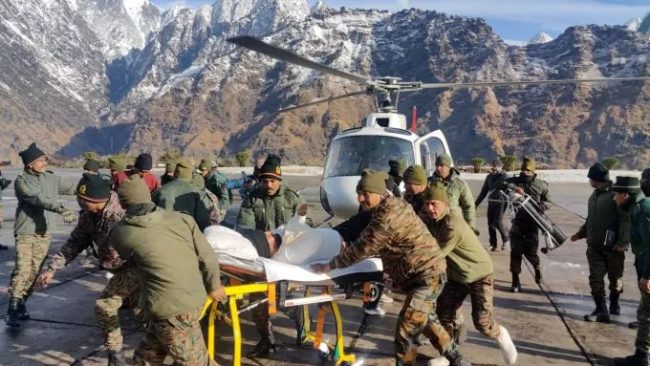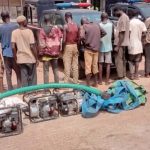
Dozens of construction workers have been rescued alive from metal containers after being trapped for around 36 hours by a deadly avalanche in the Himalayas, authorities in northern India confirmed.
The avalanche, triggered by heavy snowfall last Friday, struck near a construction site in the village of Mana, Uttarakhand state, approximately 10,500 feet (3,200 meters) above sea level.
The Indian Army launched a rescue operation, working alongside the Indo-Tibetan Border Police to locate the trapped workers.
A total of 46 workers survived inside the metal containers, while eight others lost their lives, officials said. Many of those rescued were migrant labourers working on a highway project in the remote mountainous region.
According to CNN, Lt. Col. Manish Srivastava, a defence spokesperson in Uttarakhand, stated that the workers typically pitched tents but had opted to stay in metal containers due to severe weather conditions. The decision, he said, was crucial in preventing further casualties.
“The containers… kept people safe and in fact made the rescue efforts easier because to find a body buried under such dense snow is much harder than finding a large container,” Srivastava told CNN.
ALSO READ: India: Man wins case against movie chain over lengthy pre-film commercials
Photographs posted on an Indian Army X-account depicted soldiers and sniffer dogs searching through deep snow, with images of partially crushed containers at the site. Survivors recounted the ordeal, with one unnamed worker stating from his hospital bed, “Whoever could be taken out immediately was taken out … we got full support.”
Avalanches and landslides are frequent occurrences in the Himalayas, particularly in winter. However, experts warn that the ongoing climate crisis is intensifying extreme weather events, making them increasingly unpredictable.
According to a 2023 report by the International Centre for Integrated Mountain Development, glaciers in the Himalayas melted 65% faster in the 2010s compared to the previous decade, a clear indication of rising temperatures affecting the region. The accelerated erosion of glacial slopes heightens the risks of floods, landslides, and avalanches, threatening millions who reside in mountain communities.
In 2021, Uttarakhand witnessed a catastrophic glacial collapse that resulted in the deaths of over 200 people, as a torrent of ice, rock, and water surged through a mountain gorge, destroying a dam in its path.
ALSO READ TOP STORIES FROM NIGERIAN TRIBUNE
WATCH TOP VIDEOS FROM NIGERIAN TRIBUNE TV
- Let’s Talk About SELF-AWARENESS
- Is Your Confidence Mistaken for Pride? Let’s talk about it
- Is Etiquette About Perfection…Or Just Not Being Rude?
- Top Psychologist Reveal 3 Signs You’re Struggling With Imposter Syndrome
- Do You Pick Up Work-Related Calls at Midnight or Never? Let’s Talk About Boundaries






